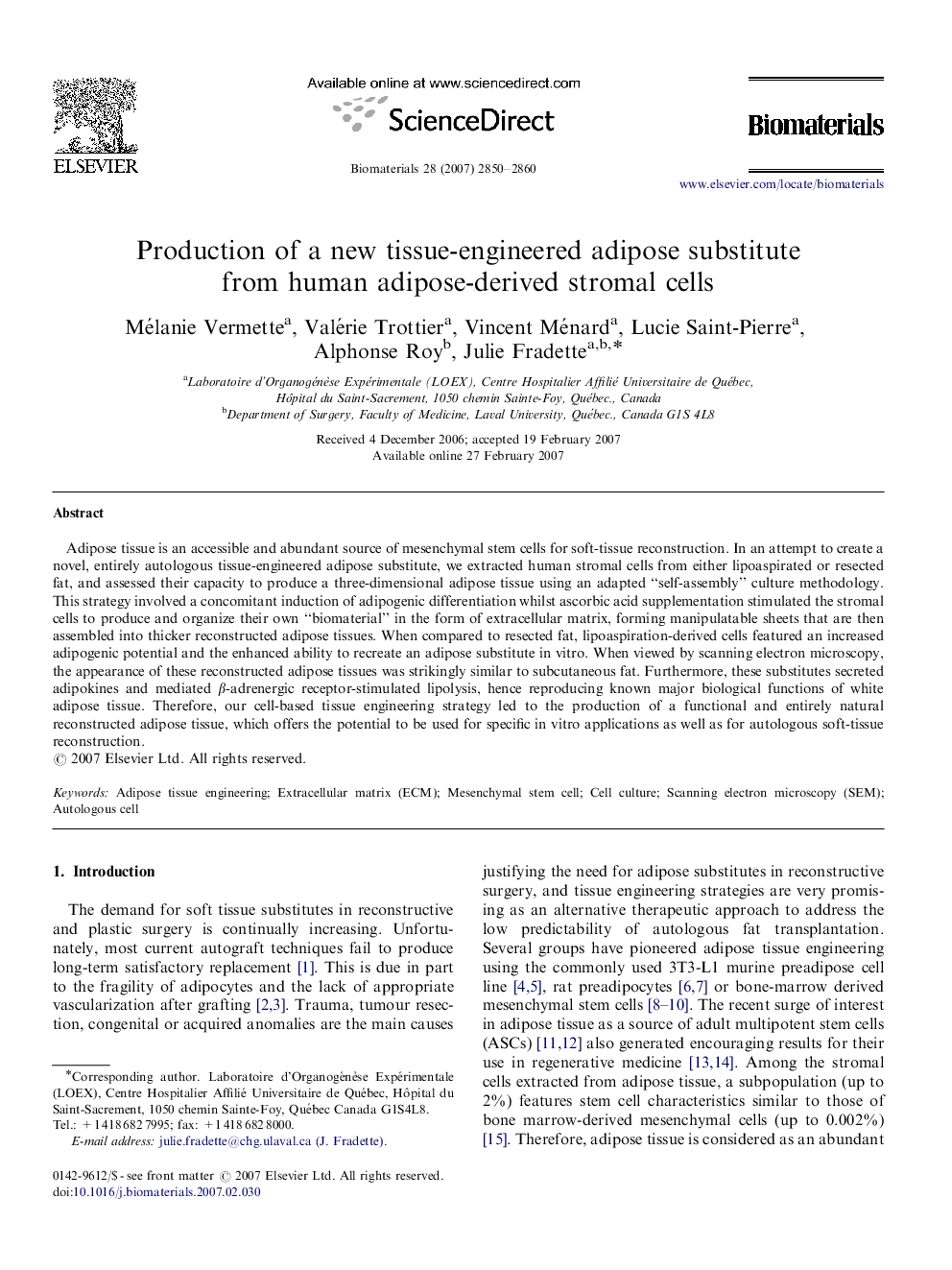| Article ID | Journal | Published Year | Pages | File Type |
|---|---|---|---|---|
| 9991 | Biomaterials | 2007 | 11 Pages |
Adipose tissue is an accessible and abundant source of mesenchymal stem cells for soft-tissue reconstruction. In an attempt to create a novel, entirely autologous tissue-engineered adipose substitute, we extracted human stromal cells from either lipoaspirated or resected fat, and assessed their capacity to produce a three-dimensional adipose tissue using an adapted “self-assembly” culture methodology. This strategy involved a concomitant induction of adipogenic differentiation whilst ascorbic acid supplementation stimulated the stromal cells to produce and organize their own “biomaterial” in the form of extracellular matrix, forming manipulatable sheets that are then assembled into thicker reconstructed adipose tissues. When compared to resected fat, lipoaspiration-derived cells featured an increased adipogenic potential and the enhanced ability to recreate an adipose substitute in vitro. When viewed by scanning electron microscopy, the appearance of these reconstructed adipose tissues was strikingly similar to subcutaneous fat. Furthermore, these substitutes secreted adipokines and mediated β-adrenergic receptor-stimulated lipolysis, hence reproducing known major biological functions of white adipose tissue. Therefore, our cell-based tissue engineering strategy led to the production of a functional and entirely natural reconstructed adipose tissue, which offers the potential to be used for specific in vitro applications as well as for autologous soft-tissue reconstruction.
